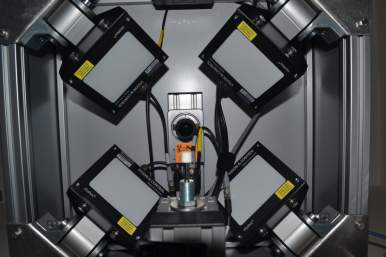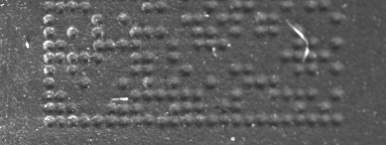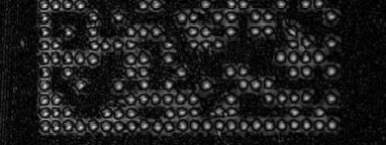2D barcode reader using Halcon embedded 3D techniques on a smart camera
The Requirement
A European aerospace manufacturer contacted Fisher Smith to see if they could solve an application regarding the reading of difficult 2D dot peened barcodes that standard technology could not reliably read.
Overview of the solution
Fisher Smith turned to MVTec’s Halcon for a solution and found that by using photometric stereo techniques to compose a pseudo-3D image the codes could be read more reliably. However, the customer did not want a PC based system traditionally used for Halcon applications. Fisher Smith hence deployed Halcon Embedded running on a Vision Components Nano Z Arm/Linux smart camera. The Nano Z series of housed and board level smart cameras are based on the dual-cored Arm ZYNQ module from Xilinx which provides a very powerful platform for embedded machine vision applications. Available in mono and stereo head formats with a wide range of resolutions Fisher Smith chose the 2-megapixel VCpro Z housed camera. To create the correct image Fisher Smith used 4 Vision & Control FDL04 area lights each powered by Vision & Control DLC3005 strobe controllers to enable the camera to flash the lights in sequence using its digital IO, from which halcon composes the photometric stereo image.
Halcon’s barcode reading tools are then used to decode the data. The VCpro Z camera has an RS232 interface to enable the read codes to be transmitted to downstream devices and numerous IO for communication with other equipment. To create a user interface Fisher Smith built a web server to run on the camera enabling it to serve web pages for the user to configure the device and observe the acquired pseudo-3D images via the camera’s ethernet interface, these web pages can then be viewed on any network connected device with an internet browser such as PCs, tablets, phones and HMIs.
Bob Fisher, director at Fisher Smith stated “Vision Components smart cameras have always been an excellent choice for embedded vision applications, but with the addition of Halcon Embedded makes such implementations much more powerful and easier to realise”.



